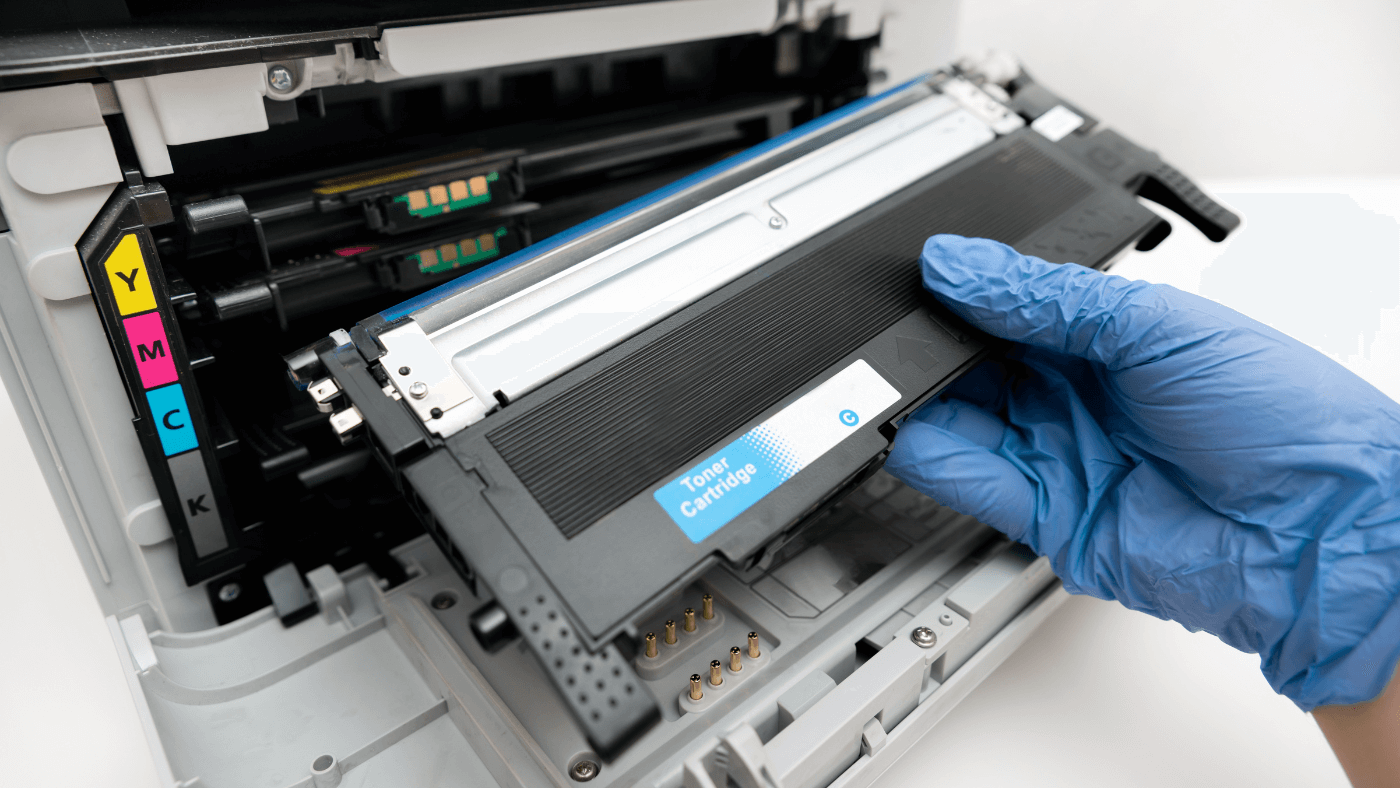In today's fast-paced world, where printing technologies play a central role in offices, educational institutions and even home use, the quality of print results is at the heart of user expectations. Toner, the heart of the laser printing process, is a key element that contributes significantly to meeting these expectations. Unlike the liquid inks used in inkjet printers, toner is a fine powder used in laser printers and digital copiers. Its importance extends far beyond its mere function as a print medium; Toner directly affects the sharpness, clarity and durability of printed documents and images.
By applying electrostatic charges and heat, toner enables precise and efficient transfer of text and images to paper. This technology not only offers superior resolution and finer detail compared to many other printing methods, but also ensures the longevity and resistance of prints to environmental influences such as moisture and light. Toner's advanced composition and associated properties underline its central role in modern printing technology and highlight the importance of careful selection and handling to achieve the best possible printing results.
What is toner and how does it work?
Toner is a fine, powdery material used in laser printers and copiers to create text and images on paper. At its core, toner differs from the ink used in inkjet printers in its dry nature and the way it is applied to the paper.
The laser printing process begins by transferring an electrostatic image of the document to be printed to a drum or photoconductor in the printer. Toner is then applied to these charged areas of the drum. The charged toner particles adhere to the areas that represent the image or text, while the uncharged areas remain free of toner. The paper is then passed past the drum and heat and pressure permanently transfer the toner to the paper. The heat applied in the fusion or fusing process melts the resin in the toner, creating a strong bond between the toner and the paper. This process makes it possible to produce highly precise and sharp prints that are instantly dry and do not smear.
The composition of the toner varies depending on the manufacturer and model, but typically contains a mixture of synthetic resin, pigments for color, and sometimes magnetic particles that help transfer the toner to the paper. The use of toner allows for higher print speeds and production efficiency compared to many inkjet printers, making it ideal for use in office environments and with high volumes of printing.
The technology behind toner and laser printers continues to revolutionize the way documents and images are reproduced, delivering durable, high-quality prints with an efficiency that is critical to the demands of modern work and learning environments.
The composition of toner: synthetic resin, iron oxide and color pigments
The composition of toner is the result of advanced chemical and physical research and plays a crucial role in the efficiency and quality of the laser printing process. Three main ingredients are found in most toners: synthetic resin, iron oxide and color pigments. Each of these components fulfills specific functions in the printing process.
Resin
Synthetic resin forms the basis of the toner and is responsible for “carrying” the color pigments. During the printing process, the heat in the printer melts the synthetic resin, which transfers the toner to the paper and fixes it there. After cooling, the resin hardens again, permanently fixing the pigments to the paper. This process ensures the longevity and smudge resistance of the prints.
Iron oxide
Iron oxide particles are added to the toner to impart magnetic properties. These magnetic properties are particularly important for the process of electrostatic charging and transfer of toner from the drum to the paper. In some printing systems, magnetization also allows toner to be precisely aligned during printing, resulting in higher print quality and accuracy.
Color pigments
The color pigments in the toner are responsible for the color of the printouts. Depending on whether the printer is black and white or color, different pigments can be used. Color toners use specific pigments for the primary colors cyan, magenta, yellow and black (CMYK) to produce a wide range of tones and gradations. The quality and composition of the pigments directly influence the brilliance, saturation and accuracy of the printed colors.
The composition and quality of the components of a toner are crucial for the printing result. High-quality toner not only delivers better print quality, but also contributes to the longevity of printers and copiers by ensuring a smooth and reliable printing process. Manufacturers are continually developing new toner formulations to improve the performance and environmental impact of their printing systems.
The benefits of toner for efficient and high-quality printing
Efficiency in the printing process through toner
Toner, the key element in laser printers and copiers, contributes significantly to the efficiency of the printing process. This efficiency is manifested in several key aspects:
-
Fast printing speed: Unlike inkjet printers, which require the ink to be sprayed onto the paper and dried, toner printing allows the image to be instantly fixed to the paper using heat. This direct transfer and fixing process significantly speeds up the entire printing process, which is particularly advantageous for large print volumes.
-
Higher page yield: Toner cartridges typically have a higher yield than ink cartridges, meaning they can print more pages before replacement is necessary. This higher page yield reduces the need for frequent cartridge changes and increases productivity in office environments.
-
Less Maintenance: Laser printers and copiers that use toner often require less maintenance than their inkjet counterparts. Toner causes less clogging and requires fewer cleaning procedures. This results in fewer service interruptions and stable print quality over longer periods.
-
Consistent print quality: Toner enables consistently high print quality from the first to the last sheet, without the problems common with inkjet printers such as fading colors or uneven ink distribution. This is particularly important for printing professional documents and presentations.
-
Energy efficiency: Modern laser printers and copiers are optimized for their energy efficiency. The fast printing process and toner efficiency help reduce energy consumption per page compared to some other printing technologies.
By combining these advantages, Toner offers a solution that is optimal for both fast and high-volume printing in professional environments and the need for high-quality printing at home or in small offices. The ability to quickly and reliably produce consistently high-quality documents without frequent maintenance or cartridge changes makes toner an economical choice for efficient, high-quality printing.
The importance of toner for sharp text and clear images
The use of toner in laser printers and copiers is critical to producing sharp text and clear images. Toner, a fine powder, enables precise, high-resolution image transfer due to its specific nature and use in laser printing technology. During the printing process, the image or text is first transferred electrostatically to a drum. The toner then only sticks to the charged areas of this drum that correspond to the image or text. The subsequent heat treatment causes the toner to fuse with the paper, resulting in durable and smudge-resistant prints. This technology not only delivers exceptionally high print quality with sharp edges and fine details, but also enables excellent color depth and contrast in images, which is essential for professional documents and presentations.
Longevity and cost-effectiveness of toner prints
In addition to high print quality, toner prints offer impressive longevity, which sets them apart from other printing methods, especially inkjet printing. Toner prints are significantly more resistant to environmental influences such as light and moisture, which significantly increases the lifespan of documents and photos. This durability makes toner the preferred choice for important documents that need to maintain readability and color integrity for years to come. Additionally, toner prints are cost-effective compared to inkjet printers due to the higher page yield of toner cartridges and lower maintenance requirements. Although the initial cost of toner cartridges may be higher, the longer lifespan and higher print capacity result in a lower cost per page, resulting in significant savings on regular printing needs. This combination of durability, high print quality and cost efficiency makes toner printing an economically viable solution for offices and private households alike.
Choosing the right toner: tips and recommendations
Choosing the right toner is crucial to the quality of your prints and the longevity of your printer. To choose the best toner cartridge for your printer, consider the following tips and recommendations:
-
Check compatibility: Make sure the toner cartridge is compatible with your printer model. Using incompatible cartridges can cause printing problems or even damage your printer. For compatibility information, see your printer's user manual or the manufacturer's website.
-
Original vs. Compatible Cartridges: Original cartridges (OEM) are produced by the printer manufacturer and usually guarantee the best quality and reliability. Compatible third-party cartridges can be a more cost-effective alternative, but it's important to check the quality and reviews of these products before making a decision.
-
Understand print capacity: Pay attention to the print capacity of the toner cartridge, which is expressed in number of pages. Higher capacity means you can print more pages before the cartridge needs to be replaced, which can be more cost-effective in the long run.
-
Consider environmental factors: Some manufacturers offer recycling programs for used toner cartridges. Choosing eco-friendly products or participating in recycling programs can help reduce the environmental impact of your printing needs.
-
Quality over price: While price can be an important factor, quality and reliability should be a priority when choosing toner cartridges. Poor quality can lead to poor printing results and even increase the need for frequent repairs or replacement of your printer.
Are you ready to achieve the best possible print quality for your documents and images? Check compatibility and choose the right toner cartridge for your printer today. Whether Canon , HP , Epson or Dell , with us you will find the right selection of toner cartridges that impress with their quality and reliability. Don't compromise on the quality of your prints - choose the best toner for your needs at Tonerfabrik Berlin!



